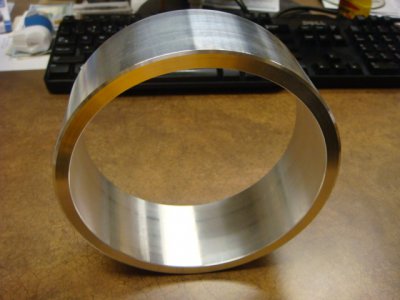Just finished my first lathe part (here). Now, I need to drill a hole (and counterbore) in its side perfectly aligned (very close) radially. I have a small round column mill (RF31). I planned to chuck it in the vice (oriented so I'm looking through the hole) and drill. Finding the center from the front/back edges of the ring is straightforward. But I'm not sure how I'm going to center the ring left-right. I do have a DRO FWIW. The hole will be tapped and a post screwed into it, so the hole needs to "point" toward center. The assembly will rotate about that post in a special clamp (it's a big lens mount)
Suggestions?


Suggestions?



